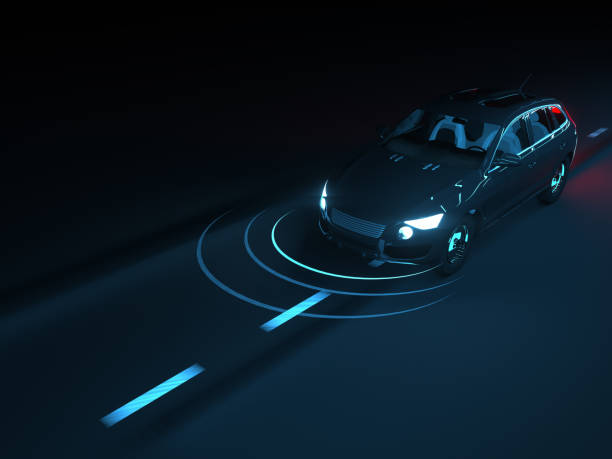In today’s fast-paced world, vehicle detection sensors have become a vital component of modern transportation systems. These sensors play a key role in areas such as parking management, traffic monitoring, and the development of autonomous vehicles. By understanding the various types of vehicle detection sensors and their functions, industries can harness these technologies to streamline transportation systems and increase safety on the roads. By accurately detecting vehicles, these sensors help improve road safety, optimize traffic flow, and enhance the overall driving experience.
There are several types of vehicle detection sensors available today, each with unique capabilities. Among the most common are ultrasonic sensors, which are known for their close-range accuracy, and radar sensors, recognized for their effectiveness in various weather conditions and over long distances. Understanding these technologies is essential for making informed decisions about integrating them into transportation systems.
Understanding Vehicle Detection Sensors

Vehicle detection sensors are devices designed to detect the presence or movement of vehicles in a specific area. They are widely used in different traffic management and safety applications to enhance the efficiency of transportation networks. These sensors provide crucial data that can help reduce congestion, improve parking efficiency, and support the functionality of advanced driver-assistance systems (ADAS).
Types of Vehicle Detection Sensors
- Ultrasonic Sensors: These sensors use sound waves to detect vehicles. They are particularly effective in short-range scenarios and are often used for parking assistance systems.
- Radar Sensors: Using radio waves, radar sensors can detect vehicles over long distances and in various weather conditions. They are a popular choice for adaptive cruise control and collision avoidance systems.
For more in-depth information on vehicle detection sensors, you can refer to this article from ScienceDirect.
Ultrasonic Sensor for Vehicle Detection

Ultrasonic sensors play a critical role in detecting vehicles with precision. These sensors use sound waves to spot cars and are known for their exceptional accuracy, particularly in short-range settings. This makes them highly beneficial in various vehicle detection applications.
How Ultrasonic Sensors Work
Ultrasonic sensors function by sending out sound waves, which bounce off obstacles like vehicles and reflect back to the sensor. By calculating the time it takes for the waves to return, these sensors can determine the distance to the vehicle.
Key Benefits
- Accuracy: Ultrasonic sensors are highly accurate, especially in short-range environments.
- Affordability: They are typically cost-effective, making them an attractive option for many applications.
- Flexibility: Can be used in various settings, including busy parking structures.
To explore the specifics of how ultrasonic sensors are utilized in vehicle detection, you can refer to this study on ultrasonic sensors.
Radar Sensor for Vehicle Detection

Radar sensors are another popular choice for vehicle detection, known for their impressive capabilities over varied distances. They are particularly effective in environments where weather conditions, such as rain or fog, might challenge other sensor types.
How Radar Sensors Work
Radar sensors emit radio waves that reflect off vehicles. By measuring the returned signals, they accurately gauge the distance and speed of the vehicle. This makes them indispensable in modern transportation systems.
Advantages
- Weather Resistance: Unlike other sensors, radar can operate under adverse weather conditions, such as heavy rain or fog.
- Long-Range Detection: Capable of detecting vehicles from afar, making them ideal for highway monitoring and autonomous vehicles.
- Reliability: Offers consistent performance, enhancing safety and efficiency.
For further reading on the benefits and functions of radar sensors in vehicle detection, visit this resource.
Both ultrasonic and radar sensors offer distinctive features that benefit various aspects of vehicle detection, catering to specific needs and applications in the transport industry.
Key Features to Consider in Vehicle Detection Sensors
When selecting the right vehicle detection sensor for your needs, it’s essential to consider several key features. These features ensure that the sensor will perform effectively in your intended applications. Here’s what to look for:
- Durability: Choose sensors that can withstand harsh weather conditions and operate reliably over time. This includes resistance to weather elements such as rain, snow, and extreme temperatures.
- Integration Capabilities: Look for sensors that can easily integrate with existing traffic management and parking systems. Compatibility with other technologies enhances the overall system performance.
- Cost: The price of vehicle detection sensors is a significant consideration, particularly when planning large-scale implementations. Balance between cost-effectiveness and performance is critical.
By focusing on these features, you’ll be better equipped to choose the most suitable vehicle detection sensors for your specific requirements.
Comparing Car Sensor Technologies
When it comes to choosing between different car sensor technologies, it’s helpful to understand their strengths and weaknesses. Here is a comparison of popular types:
- Car Distance Sensors: Ideal for applications like adaptive cruise control, these sensors help maintain a safe distance between vehicles by constantly monitoring the space between them.
- Car Detector Sensors: Used for parking assistance and lane change alerts. These sensors are primarily focused on detecting vehicles or obstacles around a car to prevent collisions.
By understanding these differences, you can select technologies that best fit the operational needs and safety features of your vehicle or traffic system.
Real-world Applications of Vehicle Detection Sensors
Vehicle detection sensors play a vital role in modern transportation. They are used in various applications that help enhance efficiency, safety, and management in different settings. Here are some practical applications:
- Smart Parking Solutions: Vehicle detection sensors help streamline parking management. They detect available parking spaces and provide real-time updates to drivers, reducing time spent searching for parking spots.
- Traffic Management: These sensors are crucial in monitoring and controlling traffic flow. They provide data on vehicle count and speed, helping manage congestion and provide insights for future road planning.
- Advanced Driver Assistance Systems (ADAS): Vehicle detection sensors are integral to safety features like adaptive cruise control and collision avoidance systems. They help vehicles detect obstacles and maintain a safe distance from other cars.
These are just a few examples, illustrating that vehicle detection sensors are essential components in developing smarter, more efficient transportation systems.
Summary and Invitation to Learn More
In summary, vehicle detection sensors are crucial in today’s transportation landscape. With various types such as ultrasonic and radar sensors, they offer unique benefits suited to different needs. Key features to consider include detection range, accuracy, and cost.
As you think about integrating vehicle detection sensors into your operations, remember to evaluate your specific requirements.
Email your news TIPS to Editor@kahawatungu.com or WhatsApp +254707482874




